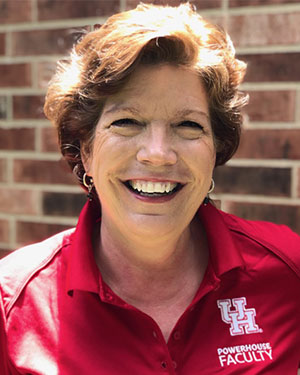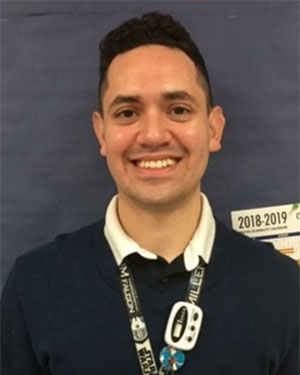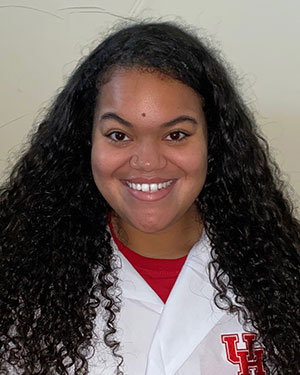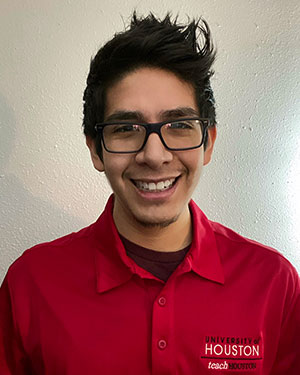Journey to the Center of the Earth

This module explores the compositional and mechanical layers of Earth through modeling using your very own homemade modeling material. Be sure to look for the hidden challenge as you watch the video.
After this module you will be able to:
- Construct a model that shows the layers of Earth.
- Describe the differences between compositional and mechanical layers of the Earth.
- Describe key characteristics of each of Earth’s layers.
- 6.10(A): Build a model to illustrate the compositional and mechanical layers of Earth, including the inner core, outer core, mantle, crust, asthenosphere, and lithosphere.
- 6.2 (C) Collect and record data using the International System of Units (SI) and qualitative means such as labeled drawings, writing, and graphic organizers.
- 6.2 (B) Use models to represent aspects of the natural world such as a model of Earth’s layers.
- 6.3 (C) Identify the advantages and limitations of models such as size, scale, properties, and materials.
NGSS – Earth Science
- MS.ESS2.1 Develop a model based on evidence of Earth’s interior to describe the cycling of matter by thermal convection.
Materials
- 2 cups of flour
- ½ cup of salt
- ½ cup of warm water
- Food coloring: red, yellow, green and blue
- 2 tbsp. of cream of tartar (optional)
- Dental floss, fishing line, or sewing thread (any of these will work, do not use any sharp objects)
- Ruler or measuring tape
- Paper
- Pencil
- Markers, Crayons or Map Pencil (optional)
Safety
- Use food coloring bottles and plastic bags properly (see steps) as they can be hazardous if used improperly. Keep away from infants.
- To prevent staining, use an apron or wear clothing you don’t mind getting stained.
- This is not an edible activity. Avoid putting materials in your mouth.
- After completing the activity, put away all materials, wash hands thoroughly and wipe down the work area.
Activity
Modeling the Mechanical and Compositional Layers of Earth. Watch activity video below.
Steps
- Gather all necessary materials and prep your workspace. Since you will be using food coloring, there is a possibility that the coloring will stain the work surface. To prevent this, cover your workspace with a tablecloth, trash bag, newspaper, wax paper, or cookie sheet.
- Scientists pre-plan. Before you build your Earth’s Layers model, draw a sketch of what you predict your model will look like. This will help you plan better and work on problem-solving before you even begin.
- To view the step by step instructions for the activity presented in the video, download this PDF file.
Dig Deeper
Read More
Convection is the process by which heat is transferred, where hot matter rises while cold matter falls or sinks. This is an important event that occurs in the outer core and the mantle. For example, have you ever heard of the Northern or Southern lights? One of the reasons that these lights actually happen is because the convection in the outer core creates electric currents. These moving electric currents create a magnetic field. In the mantle, hot rocks rise and cooler rocks sink due to convection currents. This is the primary mechanism by which heat escapes the interior of Earth and causes the movement of tectonic plates.
- Magnetic Fields in the Outer Core
- Convection Current in the Mantle (scroll down to Mantle and Core)
Watch This
Show What You Know
Meet Our Expert
Our Earth tells a story in its tectonic plates and how they interact. Meet Tyson Smith, Ph.D., a STEM expert from University of Houston’s Department of Earth & Atmospheric Sciences, who is interested in those interactions and the story they tell. Be sure to look for his cool gadgets for studying Earth’s history through rocks.
Meet The Teachers

Ramona Mateer
Program Director, teachHOUSTON STEM Interactive
Lecturer, teachHOUSTON, Department of Mathematics, University of Houston
Ramona, a University of Houston alumnus, earned a M.Ed. in Science Curriculum and Technology (University of Texas). She is a former junior high school science teacher and instructional coach. In her free time, she cycles, reads, and enjoys Nintendo Switch online gaming.

Carlos Perez
Biology Teacher, Cypress-Fairbanks ISD, Cypress Ridge High School, teachHOUSTON Alumnus, Biology Major, University of Houston College of Natural Sciences and Mathematics
Mr. Perez is a Biology teacher at Cypress Ridge High School. He graduated from the teachHOUSTON Program at the University of Houston. He always strives to make science fun and accessible to all students. In his free time, Mr. Perez enjoys learning fun facts about science, and he likes to spend time in nature.

Yolanda Sanchez
Biology, teachHOUSTON Preservice Teacher, University of Houston, College of Natural Sciences and Mathematics
Ms. Sanchez is a senior at the University of Houston majoring in Biology. She is part of teachHOUSTON, a program that prepares STEM majors, like her, to teach. Ms. Sanchez is super passionate about ecology, sustainability, and learning. She believes that everyone can be a scientist, and she is willing to help all her students to get there. In her free time, Ms. Sanchez enjoys being outdoors and going on walks with her dog, Pepper. Ms. Sanchez looks forward to being in the classroom and aspires to be a role model for younger generations.

Olivia Pittman
Biologyy, teachHOUSTON Preservice Teacher, University of Houston, College of Natural Sciences and Mathematics
Ms. Pittman is looking forward to taking Genetics and Evolution Biology this year, as an undergraduate at the University of Houston. Some of her favorite things to do range from culturing microorganisms in the lab to making her very own data graphics. When she has time away from her studies, she loves to online shop and watch her go-to reality TV shows. In the future, she hopes to have the chance to excite youth with the same concepts that drive her own interests in the ever-evolving field of science.

Nolan Nash
Mathematics, teachHOUSTON Preservice Teacher, University of Houston, College of Natural Sciences and Mathematics
Mr. Nash is an undergraduate Mathematics major and part of the Honors College at the University of Houston. Some things he’s looking forward to next year are learning more about why math works the way it does. He loves to work with numbers. From timing himself swimming laps to creating mathematical models that help predict the future, numbers are the name of the game when it comes to Mr. Nash.

Brian Gonzales
Biology, teachHOUSTON Preservice Teacher, University of Houston, College of Natural Sciences and Mathematics
Mr. Gonzales is an undergraduate at the University of Houston. As a Biology major, he enjoys learning about genetics and how the use of model organisms can help us learn more about diseases in humans. One of his favorite courses involved working with Drosophila melanogaster, a type of fly, to identify the nature and location of an unknown wing mutation.

Liandra Larsen
teachHOUSTON STEM Interactive Video Editor
Liandra is a Research Graduate Assistant for the teachHOUSTON Program. Currently, she’s pursuing her Ph.D. in Higher Education Leadership and Policy Studies at the University of Houston. Her research interests include improving the university experience for first-generation and transfer students. In her spare time, she enjoys dancing, binge-watching shows on Netflix, and overspending at Target.
- https://www.nationalgeographic.org/encyclopedia/core/
- https://courses.lumenlearning.com/geophysical/chapter/the-composition-and-structure-of-earth/
- https://www.dkfindout.com/us/earth/structure-earth/outer-core/
- https://cosmosmagazine.com/geoscience/what-creates-earth-s-magnetic-field
- https://www.nationalgeographic.org/encyclopedia/mantle/...
- https://www.youtube.com/watch?v=MmMX83diwl0
- https://www.youtube.com/watch?v=nHn5OO1t1yc
- https://quizizz.com/admin/quiz/5c76e075cf3acc001b900020/compositional-and-mechanical-layers-of-the-earth
- https://www.khanacademy.org/partner-content/amnh/earthquakes-and-volcanoes/plate-tectonics/a/mantle-convection-and-plate-tectonics